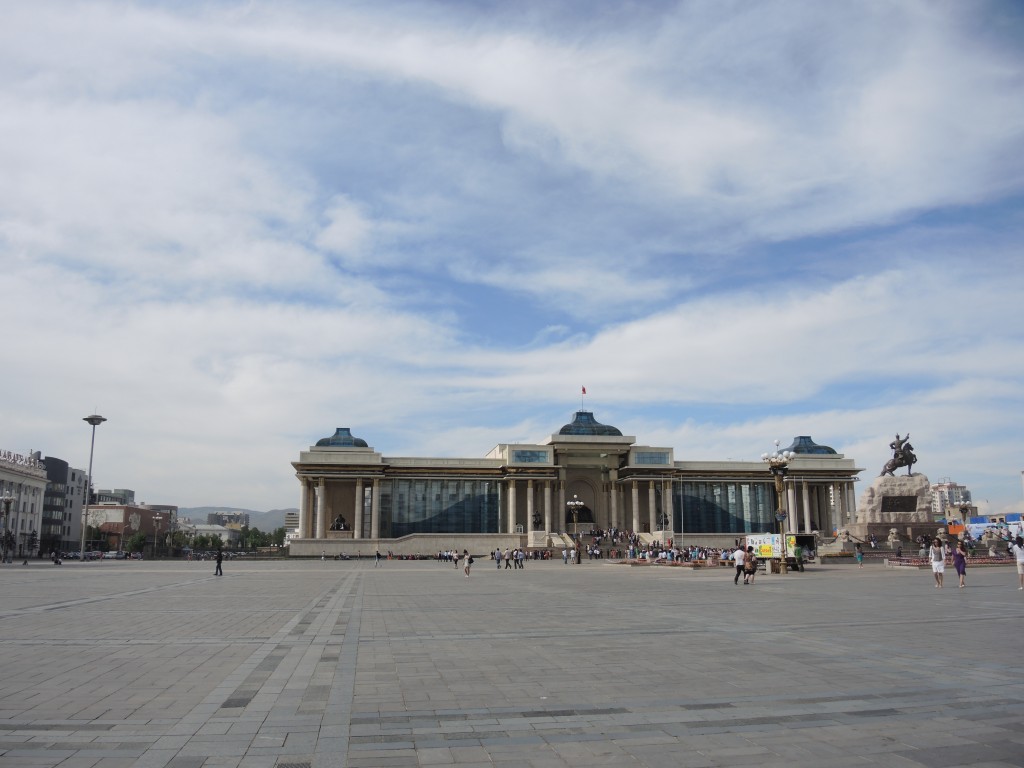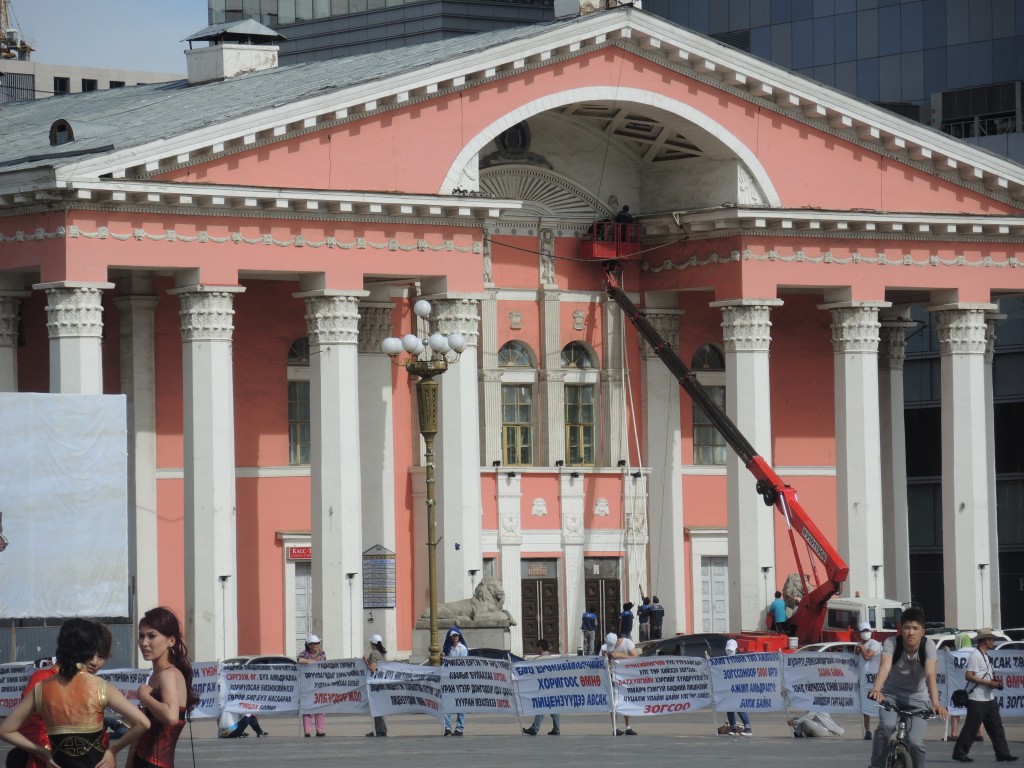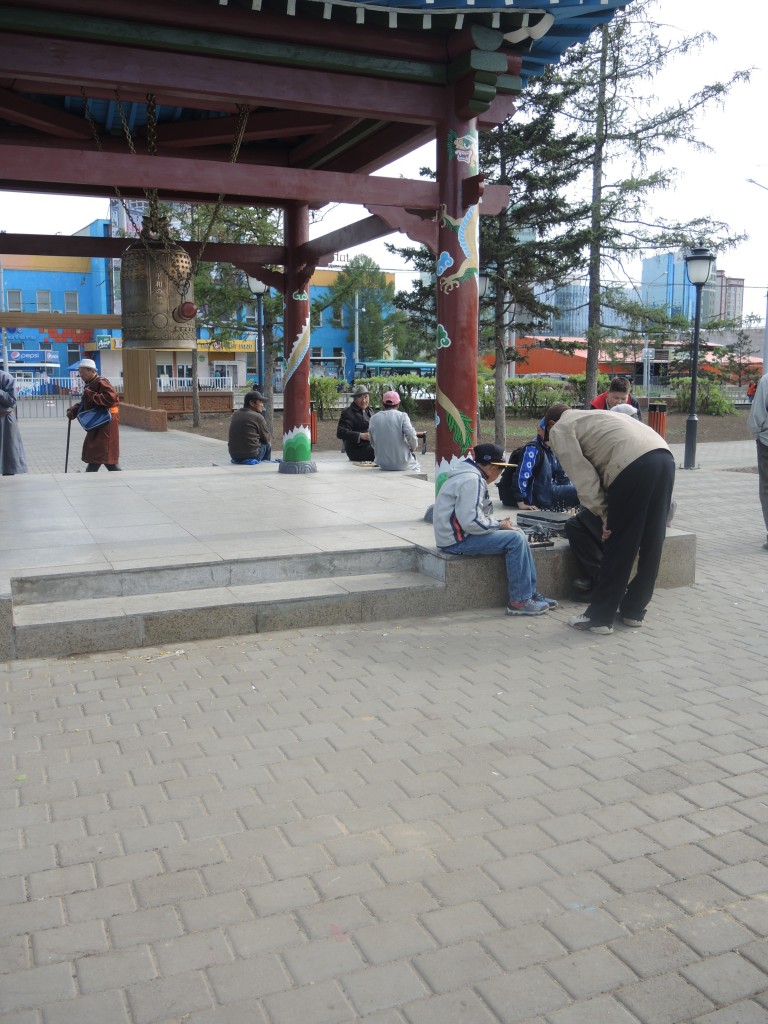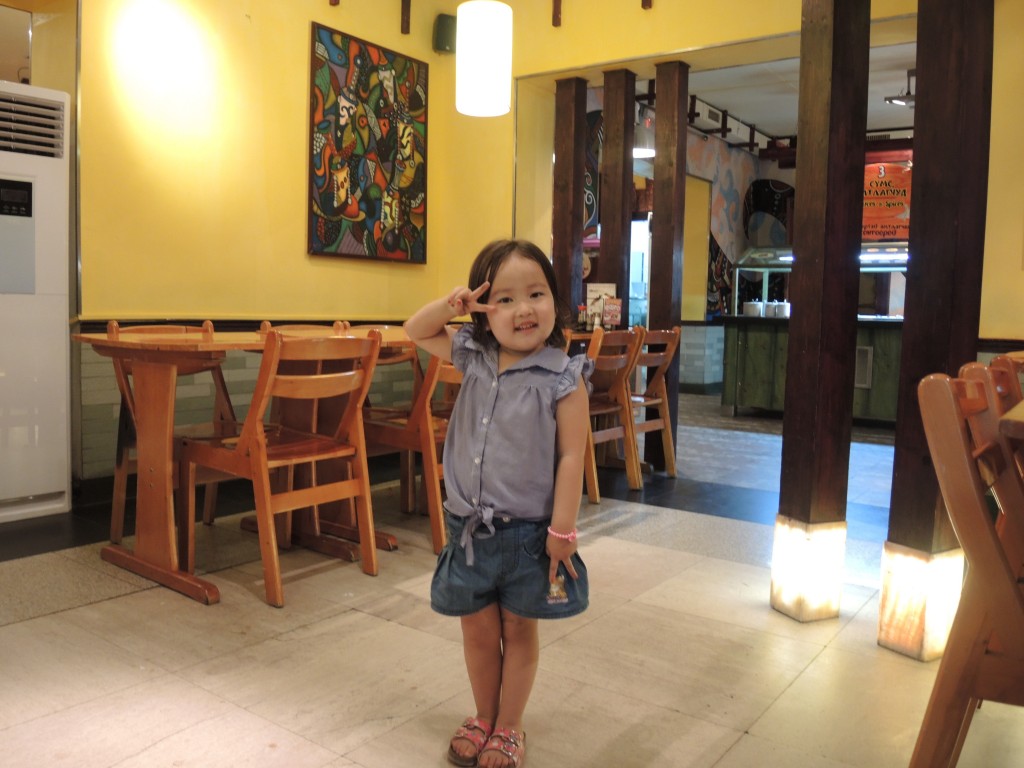The approach to UB is interesting. Like many cities, the rural to urban transition and the density of human habitation increases quickly. And still there are these colorful roofs.
The train moved swiftly toward the city center and construction is booming. Nestled between mountains I expect the city will have some lovely vistas. On the transfer from the train to the hotel I noticed this apparent oddity: Mongolia traffic drives on the right as we do in most of the world (sorry Aussies & Kiwis). However, at least in UB, cars with right side steering outnumber cars with left side steering by at least three to two. The use of horns is persistent and traffic signals attempt to control intersections that meet at odd angles. To the untrained eye (or perhaps to the trained eye, too) drivers seem to obey or ignore those signals with the same laissez-faire approach they maintain when choosing right or left side steering. As for pedestrians, you enter the street wholly at your own risk.
Two other peculiarities I noticed on the drive to the hotel that were both confirmed as we traveled the city later by bus and on foot. The first is that Toyota must have done a remarkable job marketing not only its vehicles generally but the Prius in particular. The number of these hybrids I’ve seen has astonished me. UB may have more Priuses (Prii?) per capita than any city in the world. Certainly more than any place I’ve ever been. The second is that karaoke seems to be an enormously popular activity in UB. I felt as though we passed a karaoke bar on every block.
And, of course, there was the Blue Sky building
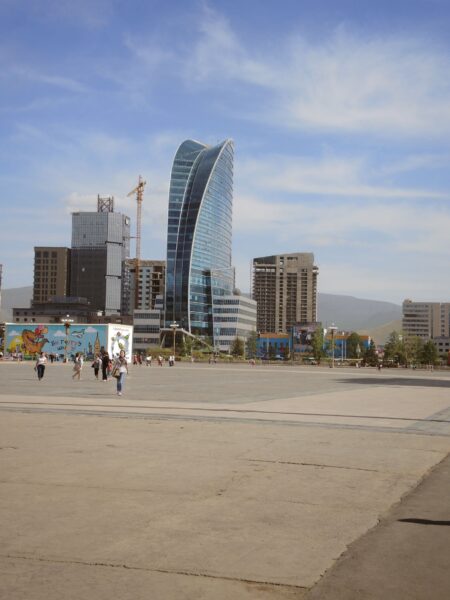
which would become my principal point of reference for finding my way about the city.
After we checked into the hotel, G took us on a brief walking tour to orient us to the city because we will have considerable free time here. The city – at least the parts that we are likely to want to visit – isn’t terribly large and the public transportation is limited so we expect to do plenty of walking. Before I talk about that, allow me a brief rant about the hotel:.
The hotel itself was a true experience with a strong negative connotation hanging on the word experience. With the full understanding that GAdventures wants to patronize locally owned establishments to help support the local economy, that Mongolia isn’t among the world’s most advanced or wealthiest countries, and that this was never intended to be a luxurious trip, I think they could have made a better and more well-informed choice than the Michele hotel.
First, we had to cope with the tiny elevator into which we could barely squeeze two people and their luggage. With eight of us, that meant four trips to reach our rooms. John and Anne and I were given keys to rooms that hadn’t been cleaned so the manager had to find us different rooms. The Michele is a very small hotel and this meant moving to a different floor. When I got to my new room, I’d learn later that night that the open tile where the shower pipe met the wall pipe meant that with every shower as much water would end on the floor as on me. Even more interesting, looking for a pen, I opened the desk drawer and discovered that this was apparently a full-service hotel. There was no pen but there were seven condoms. In John and Anne’s room, the shower curtain simply fell off the wall. In another instance, it was the window curtain that fell and that the maintenance man tried to hold in place as the glue set. I could go on, but you get the idea.
From the hotel we walked past a statue of Khorloogiin Choibalsan – Mongolia’s communist leader until 1952. Choibalsan is closely associated with Stalin and, as head of the Mongolian People’s Revolutionary Party, instigated several massive “repressions.” People were killed and exiled and monasteries were destroyed. If you know Stalin’s history, you know some of Choibalsan’s.
Still, somehow his image in Mongolia remains mixed. At the time of his death, he was widely mourned as a hero, a patriot, and ultimately a martyr for the cause of Mongolian independence because by making Mongolia a client state and ally of the Soviet Union, he was able to maintain independence from any Chinese claims to the territory. Remnants of his strong personality cult, as well as successful efforts by his successor to obstruct efforts that could have shed light on Choibalsan’s actions during the purges, helped solidify the positive regard many Mongolians hold of their former leader.
On we went to Sükhbaatar Square which is the center of UB. This central square is 31 hectares. It’s bordered on one end by the Parliament (which honors Chinggis Khan),
on one side by the Opera House,
and on one side by the Peace Bell.
Residing in the center of the square is a statue of Damdin Sükhbaatar on horseback. (Go to this folder to see it.) Sükhbaatar was a founding member of the Mongolian People’s Party and is known as the “Father of Mongolia’s Revolution.” The choice for the location of the statue is an interesting one. The statue was erected in that spot because Sükhbaatar’s horse had, in what is considered a good omen, urinated there in 1921 during a gathering of the Red Army.
Before wrapping up this entry, I have one last picture to show because I want to tell you the story behind it:
We decided as a group to have dinner at a Mongolian grill. For those of you who have never eaten in this type of restaurant, the food is presented as if at a buffet. You fill a bowl with vegetables, some sort of protein, choose your seasonings and a sauce, and present it to the cook who cooks it on a large round griddle before returning it to you. G told us that the local restaurant would likely have any number of animal parts that, by consensus, most of us thought we’d find difficult to face. Thus, we opted for a tamer version, BD’s Mongolian Grill. (This choice had some irony for me since it’s part of the same chain that’s in Bethesda – less than 15 kilometers from my house. It’s mere presence in the heart of Ulaanbaatar would be ironic enough but eating dinner at the same chain restaurant that’s practically in my neighborhood after having traveled more than 10,000 kilometers from home and being in what’s considered among the world’s most remote national capitals has to be high on one’s list of ironic activities.) Well, during our meal, this little girl would periodically march about the restaurant and we waved and made funny faces at each other. Her father insisted I take her picture and she was only too happy to pose for it.
We walked back to the hotel after dinner and I took a room soaking shower. I spent a few minutes reviewing the photos I’d taken during the day, made a few notes, and collapsed into bed at about 21:30.
